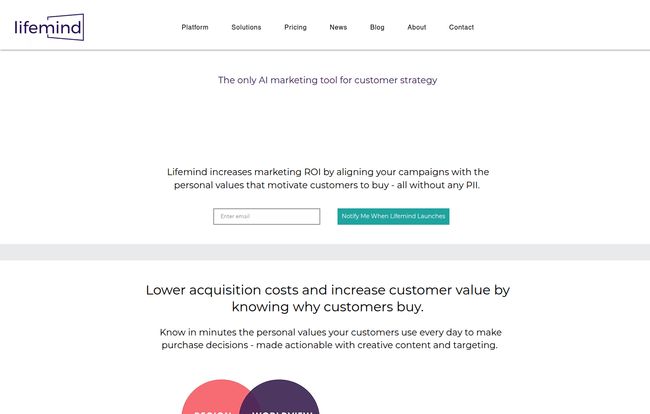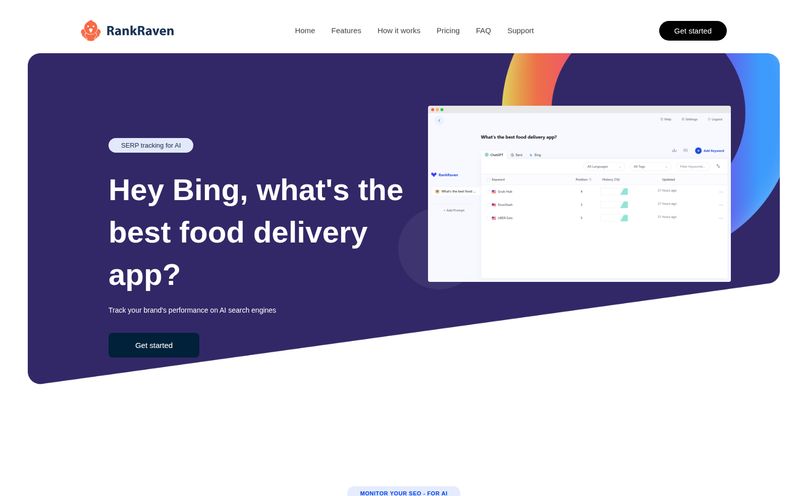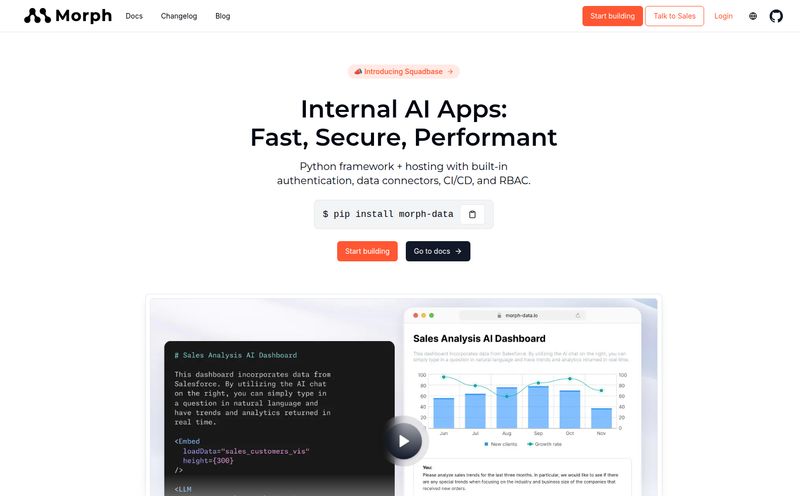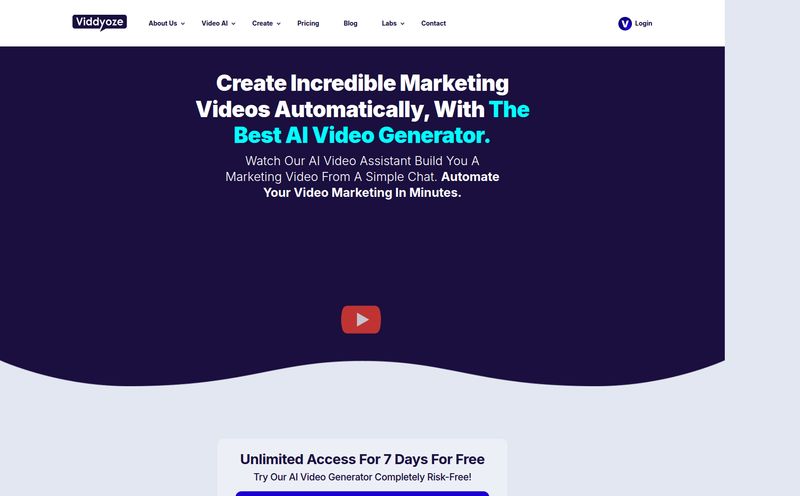How many times have you stared at a buyer persona and thought, "This is useless"? You know the one. "Marketing Mary, 35-44, lives in the suburbs, has 2.5 kids, and enjoys yoga and wine." Groundbreaking stuff, right? We've all been there, pouring money into campaigns targeting these vague, lifeless profiles, only to see our customer acquisition costs (CAC) creep higher and higher. It’s exhausting.
So when a new tool pops up on my radar claiming to go beyond demographics and tap into the personal values that actually drive decisions, my cynical marketing heart skips a beat. The tool is called Lifemind, and it's making some pretty bold claims about using AI to align marketing with what customers genuinely care about. But is it just another flash in the pan, or is it the real deal? I had to take a look.
So, What Exactly is Lifemind?
At its core, Lifemind is an AI-powered growth marketing platform. But that's a description that fits a hundred different tools. What makes it different is its entire foundation. It's built on a proprietary framework that focuses on what they call "valuegraphics"— a potent mix of a person's worldview, their generational outlook, and their regional values.
Think of it like this: demographics are the skeleton of your customer. It gives you the basic structure—age, location, income. But valuegraphics? That's the soul. It's the why behind their buy. It’s what they believe in, what gets them out of bed in the morning, and ultimately, what makes them choose one brand over another. Lifemind claims its AI can understand this on a deep level, for any business and any customer, and then turn those insights into campaigns that actually resonate.
The Features That Made Me Look Twice
I’ve seen a million feature lists. Most are just rehashing the same old stuff with a new coat of paint. But a few things about Lifemind’s approach stood out to me as a long-time traffic and trends guy.
AI-Powered Segmentation That Goes Deeper
The platform boasts it can segment your audience into 189 distinct value segments. That’s not a typo. One hundred and eighty-nine. This isn't your standard "high-intent vs. low-intent" bucket. This is about finding hyper-specific groups of people who are motivated by the same core values, regardless of whether one lives in a Miami high-rise and the other on a farm in Nebraska. For anyone who’s struggled to make a national campaign work in local markets, this is a pretty compelling idea.

Visit Lifemind
Automated Assets, But with a Soul?
Okay, I’m always skeptical of "automated creative." I’ve seen the horrors of AI-generated ad copy that sounds like a robot having a stroke. But Lifemind's pitch is a bit different. It’s not just about spitting out random variations. The idea is to generate on-brand, personalized content that’s fueled by the value-based insights it just uncovered. So, the messaging for a segment that values community and tradition will be fundamentally different from one that values innovation and disruption. If it works, it means getting to market faster without sacrificing relevance. A big 'if', but an intriguing one.
Local Intelligence for Smarter Spending
This is where the rubber meets the road for me. The platform gives your media teams new targeting strategies based on these value segments. It’s about more than just geotargeting a zip code; it’s about understanding the prevailing values within that zip code. This could drastically improve performance by focusing your ad spend on the people who are not just physically present, but emotionally and philosophically aligned with your message. Less wasted budget, more genuine connection. I like the sound of that.
The Elephant in the Room: Pricing and Availability
Alright, so what’s this going to cost? Well, here’s the catch. Lifemind is launching soon. You can't just sign up and start playing around with it today. It's currently in a pre-launch phase where they're working with select brands and agencies.
That might be a bummer for some, but I see it as an opportunity. Getting in early with a new platform can have its perks. According to their site, they plan to launch with several self-service plans, including a free trial and even multi-brand discounts for agencies, which is a smart move. For now, the only option is to contact them for a demo or to learn more about their pre-launch partnerships. If you're intrigued, it's probably worth getting on their radar now.
A Realistic Look: Potential Hurdles and High Points
No tool is a magic wand. As an SEO professional, I’ve learned to weigh the good with the bad. After looking at Lifemind, here's my quick and dirty breakdown of what gets me excited versus what gives me pause.
| What I'm Optimistic About (The Pros) | What I'm Cautious About (The Cons) |
|---|---|
| The valuegraphics database is a potential game-changer. Moving beyond demographics is long overdue. | It's not available yet. We're talking about potential, not a proven, public product. |
| AI-driven personalization could lead to significantly lower acquisition costs and higher customer lifetime value (LTV). | It will require integration. This isn't a standalone tool; you'll need to plug it into your existing marketing stack. |
| Automated asset creation means faster campaign deployment and more time for strategy. | Its effectivness hinges on the quality of the AI and the data you feed it. The classic 'garbage in, garbage out' problem. |
The biggest pro, in my opinion, is the philosophical shift it represents. For years, we’ve been optimizing for clicks and conversions without always thinking about the human on the other side. This brings the focus back to them. The biggest con is simply the unknown. It’s a powerful concept, but the execution needs to be flawless.
Who Should Be Keeping an Eye on Lifemind?
This tool isn't for everyone. If you’re a small local coffee shop with a very clear, homogenous customer base, this might be overkill. But for others, it could be a godsend.
I'm talking about DTC brands trying to scale nationally without losing their personal touch. I'm talking about marketing agencies juggling multiple clients across different industries, desperate for a more efficient way to find the unique angle for each one. And frankly, any growth marketer who is sick and tired of their campaigns hitting a performance plateau because they've maxed out what demographic targeting can do. If you're in one of those boats, you should absolutely be watching this space.
Final Thoughts from a Jaded SEO Pro
I've been in this game a long time. I’ve seen tools promise to revolutionize marketing and then quietly fade away. But there’s something about Lifemind’s approach that feels… different. It feels like a logical next step in a world that’s becoming increasingly wary of invasive tracking and hungry for more authentic brand interactions.
It’s ambitious. It’s smart. And if it can truly deliver on its promise of understanding and marketing to human values, it won’t just be another tool in the stack. It could be a whole new way of building a customer strategy. I, for one, will be keeping a very close eye on their launch. You probably should too.
Frequently Asked Questions about Lifemind
- What is Lifemind in simple terms?
- It's an AI marketing platform that helps you understand your customers based on their personal values (like worldview, generation, and region), not just their age or location. It then helps you create marketing campaigns that speak directly to those values.
- How is Lifemind different from other marketing AI tools?
- Most AI tools focus on behavior (what people click on) or demographics (who they are on paper). Lifemind's key differentiator is its focus on "valuegraphics"—the core human values that motivate people's decisions, leading to more relevant messaging.
- Is Lifemind available now? What's the pricing?
- Not quite. Lifemind is launching soon and is currently in a pre-launch phase with select partners. They plan to offer self-service plans, a free trial, and agency discounts upon full release. You'll need to contact them directly for current pricing or demo access.
- What are "valuegraphics"?
- Valuegraphics are data points about what people value most. It's a way of segmenting audiences based on shared beliefs and motivations rather than just demographic or behavioral data. The concept was pioneered by David Allison.
- Who is the ideal user for Lifemind?
- It's best suited for growth marketers, direct-to-consumer (DTC) brands, and marketing agencies that need to create resonant campaigns for diverse or geographically spread-out audiences.
- Does it replace my creative team?
- No, it's designed to empower them. The platform can automate the creation of initial assets and provide deep insights, giving your creative team a massive head start and allowing them to focus on high-level strategy and refinement rather than grunt work.



